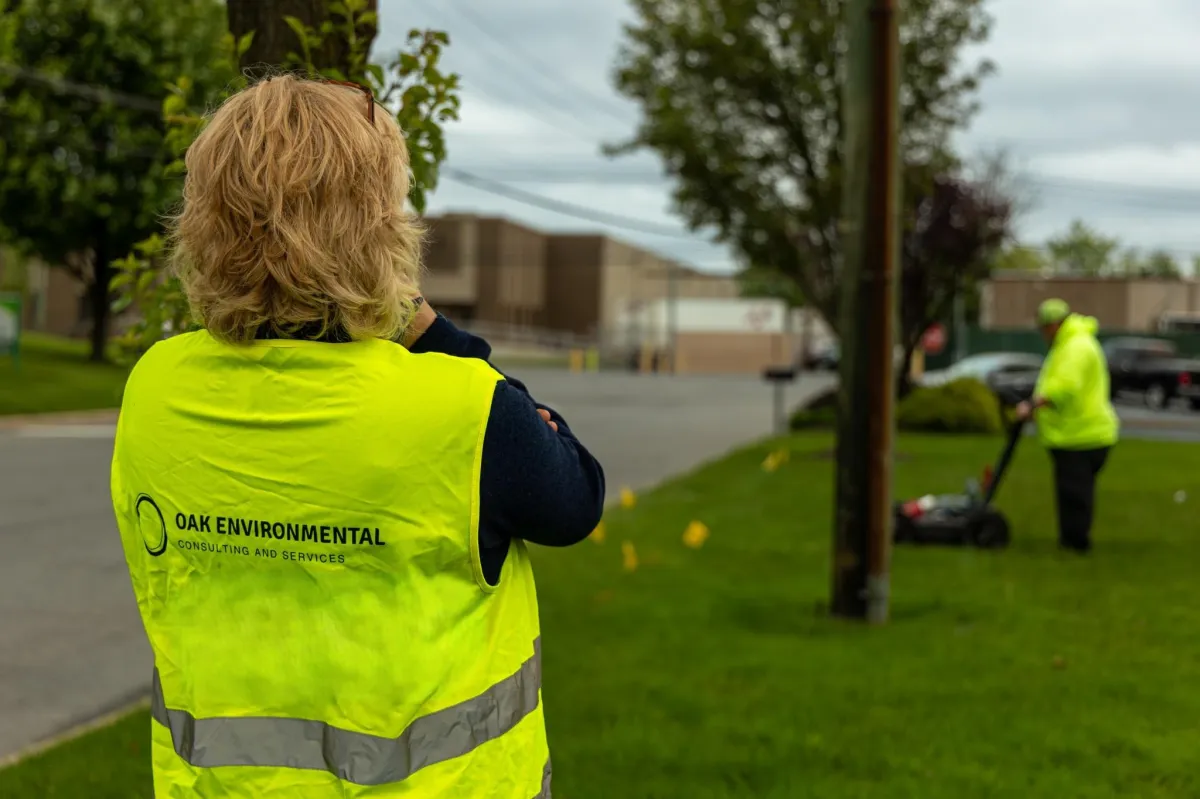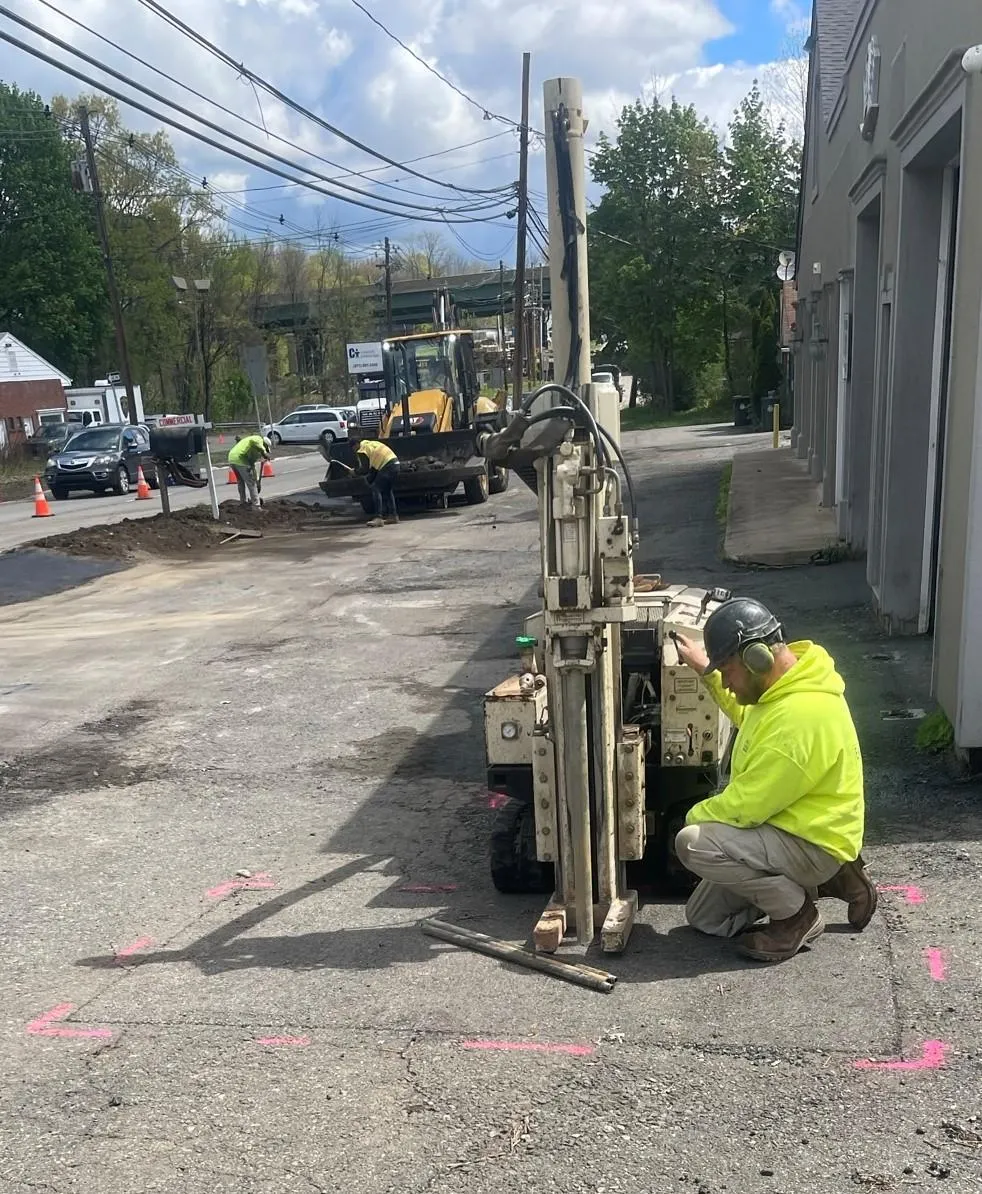
Phase I Environmental Site Assessment (ESA) in New Jersey
Protecting your property investments with clarity and compliance.
Phase I ESA at a Glance

Purpose
Identify Recognized Environmental Conditions (RECs).

Who Needs One
Buyers, lenders, attorneys, developers, and investors.

Standard Used
ASTM E1527-21.

Typical Turnaround
2–3 weeks.

Value
Protects against liability, ensures lender approval, and supports informed decisions.

What Is a Phase I ESA?
A Phase I Environmental Site Assessment (ESA) is the foundation of environmental due diligence. Before purchasing, refinancing, or redeveloping a property, a Phase I ESA provides a comprehensive review of historical and current property conditions to determine if environmental risks exist.
It is often required by lenders, attorneys, and developers and is the industry standard for identifying environmental liability before a transaction moves forward.
At Oak Environmental, we follow the ASTM E1527-21 standard—ensuring every report is defensible, lender-ready, and compliant with both federal law and New Jersey Department of Environmental Protection (NJDEP) requirements.
Why a Phase I ESA Matters
Identifies Risks Early: Detects Recognized Environmental Conditions (RECs) before they become costly surprises.
Protects from Liability: Offers protection under the federal CERCLA Superfund law by proving due diligence.
Supports Smarter Deals: Provides leverage in negotiations and strengthens lender confidence.
Speeds Up Transactions: A well-prepared ESA prevents delays and protects closing timelines.

What’s Included in a Phase I ESA
Our Phase I ESAs are structured, thorough, and fully compliant. The process includes:


ASTM E1527-21 Standard:
Why It Matters
The ASTM E1527-21 standard sets the legal and technical requirements for Phase I ESAs.
Key updates include:
Refined definitions of RECs and Controlled RECs.
Clarification on historic RECs.
Expanded guidance for title and environmental lien searches.
Non-compliance risk: A report that does not follow ASTM standards may be rejected by lenders or fail to provide liability protection. Oak ensures your ESA is always up to standard.
When Do You Need
a Phase I ESA?
Buying or selling commercial property.
Refinancing or securing a commercial loan.
Corporate mergers & acquisitions.
Redevelopment, brownfield projects, or change of use.
If a property transaction is on the horizon, a Phase I ESA is the first step to protect your investment.

The Benefits of a Phase I ESA
Avoid unexpected cleanup liability.
Strengthen negotiation positions with verified data.
Provide confidence to lenders and investors.
Ensure smoother, faster closings.
Real Example:
A NJ investor discovered underground storage tanks on a commercial lot through a Phase I ESA. By identifying the issue before closing,
they avoided nearly $250,000 in remediation costs.
Phase I ESA vs. Phase II ESA
Phase I ESA
Phase II ESA
Identifies potential environmental risks through research and inspection.
Records review, site inspection, and interviews.
No sampling or lab testing
conducted.
Standard first step for property transactions, refinancing, or redevelopment.
Determines if Recognized Environmental Conditions (RECs) exist.
Identifies potential environmental risks through research and inspection.
Involves physical sampling and laboratory analysis.
Includes soil, groundwater, and/or vapor sampling if risks are suspected.
Recommended if a Phase I ESA finds possible contamination or underground storage tanks.
Quantifies contamination levels and defines remediation needs.
When a Phase II Is Needed:
If a Phase I identifies an abandoned underground tank or signs of contamination,
a Phase II may be recommended to confirm the extent of risk.
Phase I ESA in New Jersey
New Jersey has unique requirements that go beyond federal standards:
NJDEP Preliminary Assessment (PA): In certain cases, a PA is required in place of—or in addition to—a Phase I.
Alignment with State Law: While a Phase I ESA may satisfy federal CERCLA protections, it may not meet NJDEP’s stricter standards.
Why
Oak Environmental
We are NJ-based experts. We ensure that your Phase I ESA not only meets ASTM requirements but also aligns with NJDEP regulations, so your report is never questioned by lenders or regulators.
Timeline &
Cost Expectations
Typical Turnaround: 2–3 weeks. Rush service available.
Cost Factors: Property size, historical use, location, and complexity.
Why Not Cheapest: Low-cost reports often miss details that can derail closings or leave clients exposed to liability. Oak provides thorough, defensible assessments at competitive rates.
Frequently Asked Questions
How long is a Phase I ESA valid?
Typically valid for one year; some lenders require updates after six months.
Do residential properties need a Phase I ESA?
Generally not, unless the site has a history of commercial or industrial use.
What happens if RECs are found?
A Phase II ESA may be recommended to confirm risks.
Can a Phase I ESA be reused for refinancing?
Yes, but lenders often require an updated report.
Protect Your Deal with Oak Environmental
A Phase I ESA is more than a box to check—it’s your safeguard against environmental liability and your assurance of a smooth transaction.
Request a consultation or
proposal from Oak Environmental.
Download our free Phase I ESA
Checklist to prepare.
Speak directly with our licensed environmental professionals today.
Copyright 2025. Oak Environmental Consulting and Services. All Rights Reserved.